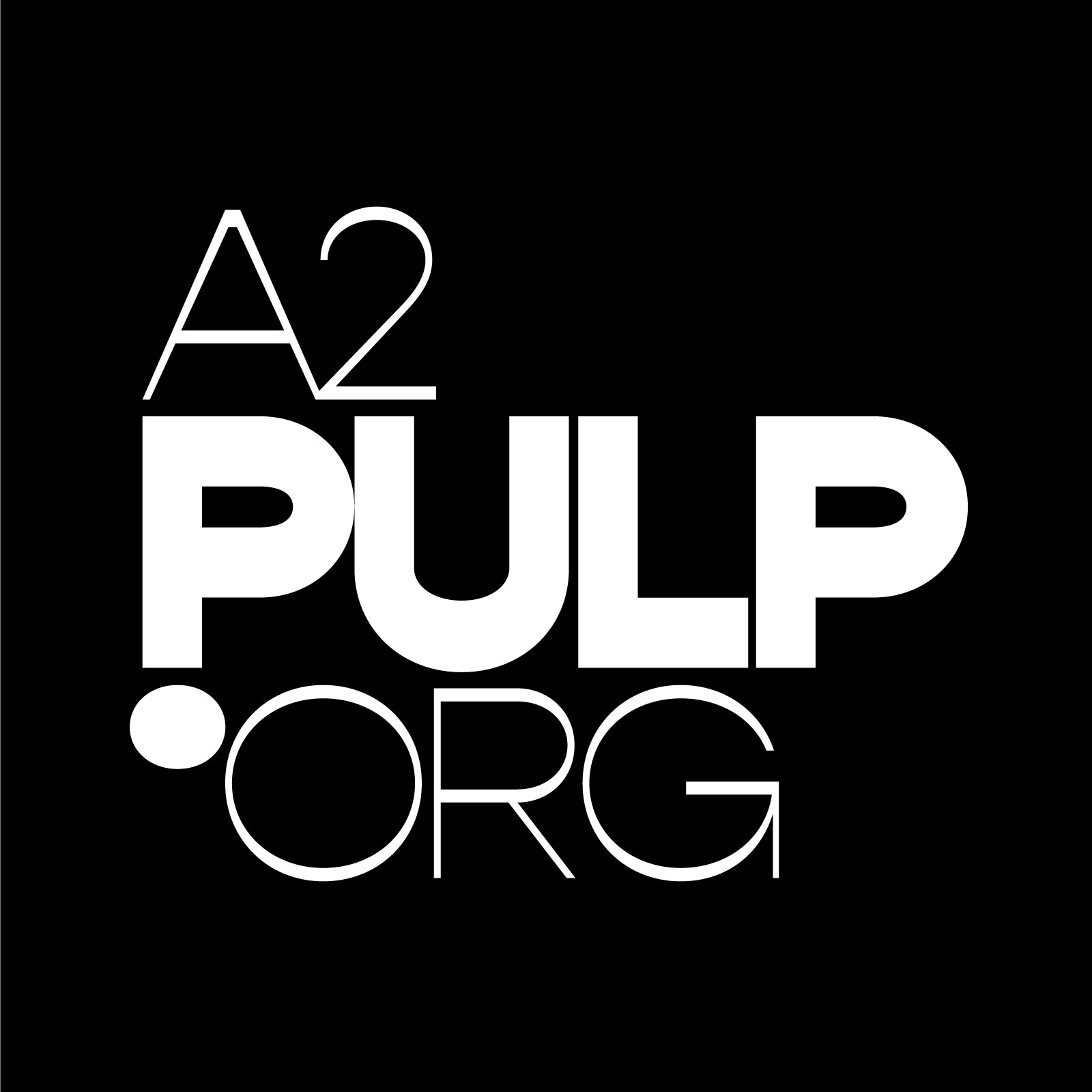Death-Dodger Rocker: Alejandro Escovedo at The Ark

It's been a rough few decades for Alejandro Escovedo, but at age 66 the musician seems to be enjoying a new lease on life. Born to Mexican immigrants in Texas, Escovedo cut his teeth in the punk band The Nuns and blended in rootsier influences with his later bands Rank and File and The True Believers. He embarked on a solo career in the '90s, winning the auspicious designation "Artist of the Decade" from roots and country music magazine No Depression in 1998. But behind the scenes of that professional achievement, Escovedo had only begun a prolonged personal battle. He was diagnosed with hepatitis C in 1996, and a combination of financial troubles and negative reactions to traditional treatment caused him to struggle with the disease for nearly 20 years.
Escovedo collapsed onstage in 2003, which led him to seek non-traditional treatment for his condition. He was finally cured of hepatitis in 2015 -- but not before he and his new wife, Nancy Rankin Escovedo, underwent a different kind of harrowing experience. Hurricane Odile struck during the couple's 2014 honeymoon in Mexico, tearing off the front of the beachfront home they were staying in. Both the Escovedos were diagnosed with PTSD following the experience.
In the wake of all this hardship, however, Alejandro Escovedo has experienced considerable rejuvenation both personally and creatively. Last year he released Burn Something Beautiful, a new album co-written with former R.E.M. guitarist Peter Buck and Scott McCaughey, frontman of The Minus 5 and The Young Fresh Fellows (and a regular R.E.M. collaborator). As with Escovedo himself, the scrappy, hooky record has far more energy than anyone might expect of the average senior citizen.
Escovedo will play The Ark on Wednesday, August 23, sharing the stage and swapping songs and stories with fellow Texas rocker Joe Ely. We caught up with Escovedo while he was visiting Austin, where he lived for over three decades before a recent move to Dallas.
Right on the Chin: Bruce Campbell on B movies, "Evil Dead," and hosting a game show
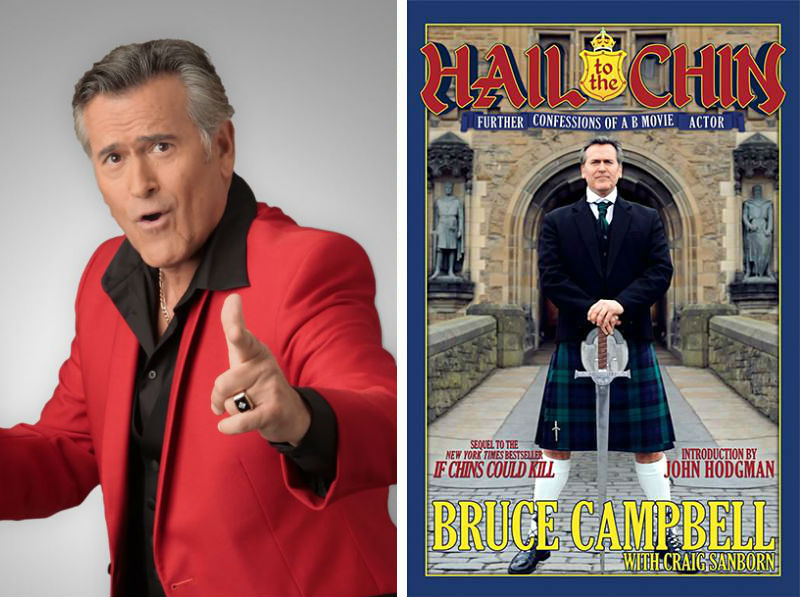
Actor Bruce Campbell has had some iconic roles in his life, but at age 65 he seems to have finally landed on the role he was truly born to play: that of a game show host.
The Royal Oak native is best known as the cocky zombie-dismemberer Ash Williams in the three original Evil Dead movies and the more recent Starz series Ash vs. Evil Dead, and as the washed-up military man Sam Axe on Burn Notice. But after hosting a charity game show for the military in 2015, Campbell was inspired to start pitching what he calls "a game show for geeks": Last Fan Standing. The comic con-themed streaming platform CONtv produced 10 episodes of the show, which may now be viewed online. Campbell is clearly in his element on the show, mercilessly razzing his contestants, handing out dollar bills from his own pocket to those who do well, and generally reveling in his role as an elder statesman -- or perhaps just a dorky old dad -- of nerd culture.
Campbell has continued Last Fan Standing in select promotional appearances for his newly released second autobiography, Hail to the Chin: Further Confessions of a B Movie Actor. Following up on his 2001 New York Times bestseller, If Chins Could Kill: Confessions of a B Movie Actor, Campbell's latest tell-all proves that he's still just as willing to turn his smart-aleck sense of humor on himself. From his tale of wrecking a tank while on a USO tour in Iraq to his epic story of almost getting cut from his minuscule role in Evil Dead director Sam Raimi's Oz the Great and Powerful, Campbell maintains a level head, a sense of humor, and a true passion for his business.
Campbell will appear at the Michigan Theater on Wednesday, August 30, to host Last Fan Standing and talk about his latest autobiographical book. We chatted with him about game shows, changing perceptions of B movies, and whether he really cares about reviews.
Slow Burner: Alabama Slim at the Ann Arbor Blues Festival

In addition to the impossible-to-replicate lineup, the real legacy of the original 1969 Ann Arbor Blues Festival is in how a group of college students helped introduce mainstream, white America to the incredible music being overlooked all around it for years in favor of repackaged versions from the U.K.
If there's such a secret hiding in plain sight at this year's revived Ann Arbor Blues Festival, it's probably Alabama Slim. Born Milton Frazier in Vance, Alabama, Slim didn't record an album until he was in his 60s, when he finally teamed up with his cousin, fellow New Orleans guitarist Little Freddie King (not to be confused with the late Chicago guitar great Freddie King) to record The Mighty Flood for the Music Maker Relief Foundation.
Slim's a first-rate storyteller, whose warm baritone voice and tasteful, hypnotic playing recall all-time greats, like Muddy Waters or John Lee Hooker on a slow burner.
We talked to Slim briefly by phone on the eve of a family reunion in Birmingham, Alabama, where he was looking forward to some good food, drinking a couple of beers, and relaxing after a long drive.
Resurrected: James Partridge on the 2017 Ann Arbor Blues Festival

As an East Coast transplant and late-comer to the blues, you can forgive James Partridge for not knowing Ann Arbor's storied history with the world's greatest blues musicians until fairly recently (or exactly blame him -- there's no Beale Street or other marker to speak of).
But as founder of the recently formed Ann Arbor Blues Society and co-organizer behind the return of the Ann Arbor Blues Festival, which takes place Saturday, August 19, at Washtenaw Farm Council Fairgrounds, he's making up for lost time quickly.
Put a Spell on You: Michael Erlewine on the 1969 Ann Arbor Blues Festival
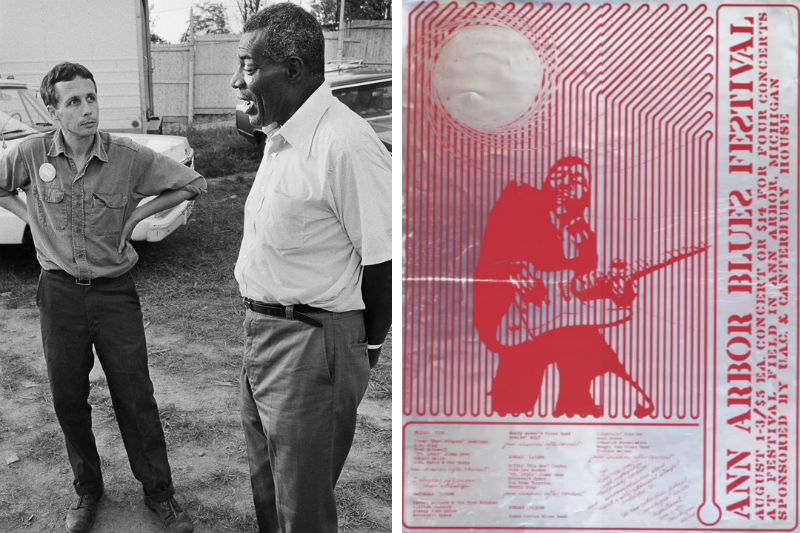
During the early folk revival of the pre-Bob Dylan 1960s, music historian and author Michael Erlewine says fans were more interested in finding the most authentic form of the music than the next great songwriter. Conserving a dying art form was the priority at gatherings like the Newport Folk Festival.
So when music heads turned their attention to the electric blues, which was largely ignored on the folk circuit, they had the same impulse. But they soon learned it was misguided.
"We wanted to revive it -- to preserve it, protect it, and save it," Erlewine says. "But to our huge surprise, it wasn't dead. It didn't need reviving. It was just playing across town behind a racial curtain of some kind. To find what we thought was a dying music was very much alive, it was just another whole world for us."
In August 1969, a group of University of Michigan students led by organizers Cary Gordon and John Fishel, brought that world home to Ann Arbor with the first ever Ann Arbor Blues Festival.
As founders of the town's resident blues band, The Prime Movers -- which eventually featured drummer Iggy Pop --
and avid students of Chicago blues, Erlewine and his brother Daniel Erlewine were enlisted to help track down and care for the talent.
And there was so much talent: B.B. King, Mississippi Fred McDowell, Muddy Waters, Magic Sam, Big Mama Thornton, Son House. The list goes on. Nearly 20,000 people are estimated to have witnessed that first-of-its-kind gathering at the Fuller Flatlands near U-M's North Campus.
With another Ann Arbor Blues Festival reboot coming on Saturday, August 19, at the Washtenaw County Fairgrounds, it seemed like a good time to check in with Erlewine, who went on to found the All-Music Guide and edit several books on blues and jazz. His 2010 book with photographer Stanley Livingston, Blues in Black and White, is an excellent, loving tribute to the original blues festivals in pictures and prose.
Erlewine talked with us by phone from his home in Big Rapids about the heady days of those early fests, tripping out on Howlin' Wolf's massive voice, and drinking early into the morning with Arthur "Big Boy" Crudup and Big Mama Thornton.
NashBash is a musical block party where the whole the town is invited
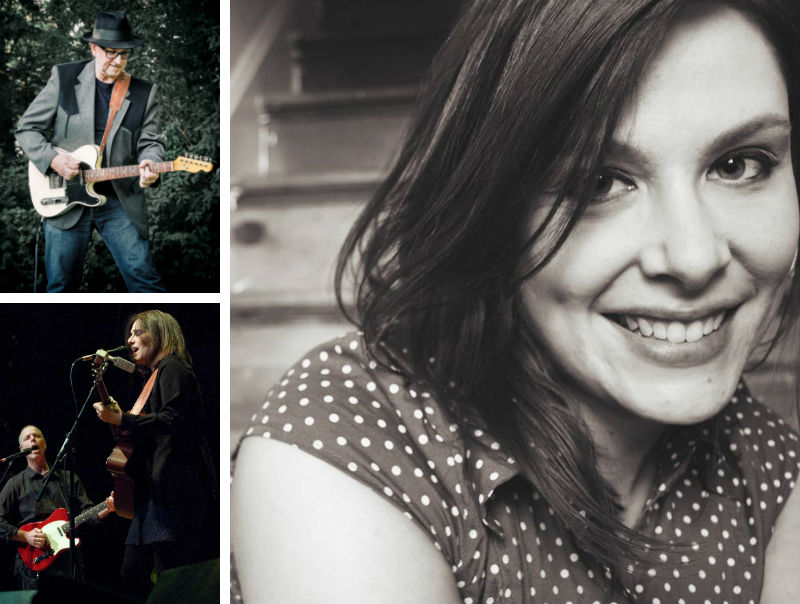
“NashBash is basically a block party,” says local musician Bill Edwards, who, along with founders Deanna Relyea and Whit Hill, organizing the 11th annual NashBash to be held on Thursday, August 17. Relyea puts it this way: “This is a music festival that really focuses on the music, which is always of the highest quality.” And Hill says, “Every year it seems to get better: more people, more energy, a really loving and supportive vibe.”
Each of them is right. For one night in August, the Ann Arbor Farmer’s Market turns into the site of a block party/music festival. Areas usually crowded with shoppers and vegetable stalls become the stage and audience seating, while the adjacent parking lot is transformed into an outdoor restaurant and dance floor.
Singin’ in the Street: Jacob Sigman and The Stellars at Sonic Lunch
“It’s so easy to get set in your ways,” local guitarist and singer-songwriter Jacob Sigman. “Playing with other people can create a fresh wave of inspiration.” Sigman, a Toledo native and 2017 University of Michigan graduate, will be showcasing his collaborative spirit with local band The Stellars at Sonic Lunch on Thursday, August 17.
The Stellars accompanied Sigman on his latest single, “Think About You,” and the result is as infectious as it is funky. “Think About You” is an upbeat, summer-vibes love song that had me toe-tapping and grinning along to the lyrics: “Summer lovings, wishful thinking / dancing in the kitchen, singin’ in the street.” Sigman’s vocal style is a serenading pop/R&B style, so it was no surprise when he cited some of his musical influences like Bruno Mars, The 1975, and Theo Katzman, another U-M alum who played Sonic Lunch this season.
Fun events for every purrsonality at Tiny Lions lounge and adoption center

History records that cats were worshiped as gods in ancient Egypt -- and they have never forgotten that! Our furry feline friends may be finicky at times, but they are also devoted, cuddly, and loving. If you don’t or can’t have a kitty (and even if you do!), you can get your feline fix six days a week at our own cat cafe, Tiny Lions. The “catfe,” which is run by the Humane Society of Huron Valley (HSHV), opened in 2016 and cat lovers have been cuddling, petting, and snuggling felines ever since. Visitors can drop in -- even grab a coffee from the Biggby next door -- for some pettings and purrs, or they can attend events such as yoga, Family Mew-vie Night, trivia for grownups, or coloring for all ages.
May Erlewine & The Motivations brought a soulful groove to Sonic Lunch
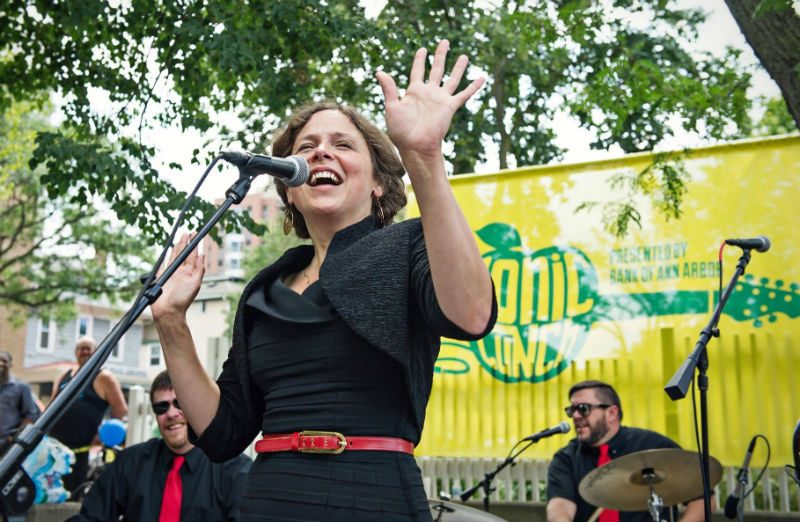
Michigan singer-songwriter May Erlewine is well known for her moving songwriting and expressive voice, generally showcased in a folk-country style with a slight pop edge. In recent months, though, she’s been working with more of a retro-soul sound -- and as everyone at Thursday’s Sonic Lunch saw and heard, the shift in style suits her very well.
“This winter, things got so bad I decided I had to have some dance parties to get through it,” she told the crowd. And that’s what she did Thursday, with her sharp six-piece band, The Motivations, playing an hour and a quarter of irresistible, infectious grooves in a mix of Erlewine originals and soul classics.
Stately Songs: Michigan folk legend Jay Stielstra feted at The Ark
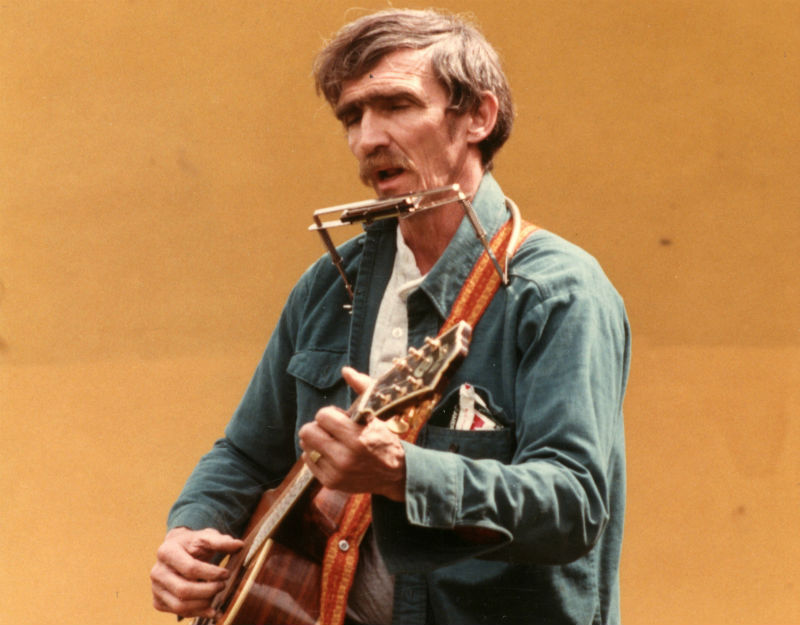
Jay Stielstra will be receiving a Michigan legislative tribute at The Ark on Tuesday, August 15. Many Michigan music fans will agree the award is well deserved and long overdue. Few musicians command more respect and affection than Stielstra, 83, who has been writing and singing about his beloved Michigan for nearly five decades.
State Senator Rebekkah Warren will present the award, which honors Stielstra’s lifetime of artistic contributions to the State of Michigan, and former State Senator Lana Pollack will introduce Senator Warren and will also make brief remarks. After Stielstra is presented the award, the music will begin. A large group of musicians will be on hand to help celebrate Stielstra by performing and/or accompanying his songs, which shouldn't take too much practice: His songs are a part of the repertoire of many musicians throughout the state.

